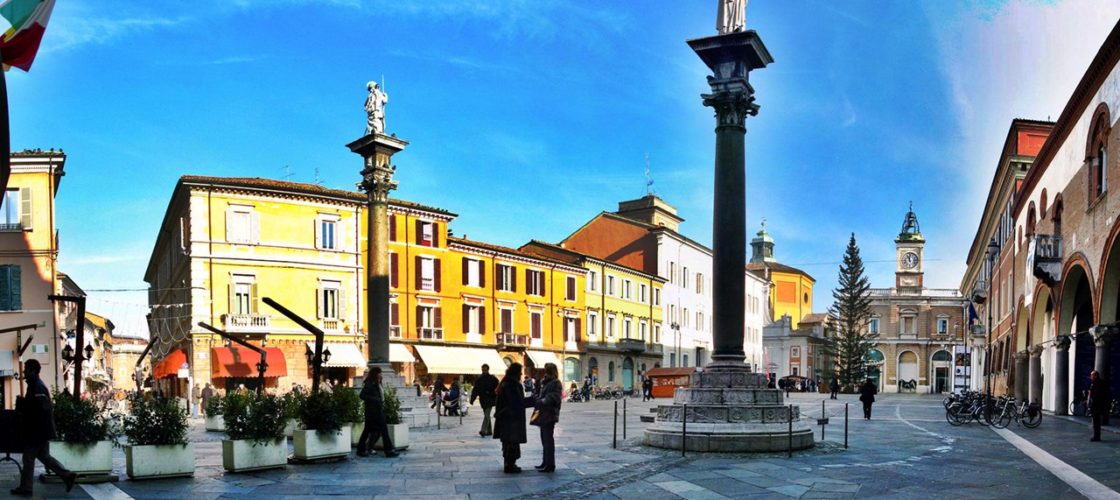
Ravenna is a mid-sized town with around 150 000 inhabitants. A quiet city, rich and without apparent problems. The weather, the Romagnolo food, Sangiovese wine and the sea on the Adriatic coast with its wonderful sandy beaches contribute to a wonderful quality of life. The city has a rich cultural life provided you have the means and maturity, notably with the famous Ravenna Music Festival and the Theater de l’Albe. The tranquillity is augmented by slow connections by train, air or car with nearby larger urban centres (Firenze, Bologna or Venice).
Why bother about Ravenna?
Scratching Ravenna’s surface brings to mind the image of archaeologists looking for remains in time ravaged cities. So let’s scratch:
6 Unesco world heritage sites testifying that the city is a former capital of the Roman/Byzantine empire, Lombard and Ostrogothic kingdoms, the residence city of worldwide cultural icons Dante de Aligheri and Lord Byron, the main port to the Adriatic sea (with 6000 employees) facing the ever erupting Balkan region , the world centre of mosaic art both ancient and contemporary (with artistic links to North Africa, the Middle East and Turkey), an industry specialized in off shore exploitation , a large gas terminal, hundreds of thousands of tourists whose number is bound to increase to enormous proportions as Ravenna has become the next stop for cruise liners on the way from popular Venice.
Ravenna is fine, thank you. But is it really?
The average age of the population is 45, students number a maximum 3000 essentially in humanities, unemployment has increased 40% over the last 5 years (22,000 unemployed), the city has turned its back on the sea but also its glorious historical past. Ravenna’s creative people (ceramicists and mosaic artists, jewellers, fashion designers, animation companies) and artists are largely ignored (with the exception of the adopted Ricardo Muti). The Darsena district, the old harbour left abandoned for years is dividing the city in two, the beauty and the beast.
Condemned to somnolence or merely a sleeping beauty waiting for the charming prince?
The ambitious new Prime Minister Renzi?
Tourists from Russia and soon China looking for Gucci bags and Valentino glasses?
The port and its 200 million Euro investment to upgrade its industrial capacities?
Culture? The city is aware of the need to develop internationally to prevent irrelevance and decline. Its bid to become European Capital of Culture2019 is part of the plan. The vision has yet to develop into a full-fledged strategy to make the cultural investment into a major driver of economic development, social and urban cohesion. The authorities are aware that a local culture policy is more than attracting tourists and organizing artistic events to attract media attention and obtain the EU patronage.
Cultural investment is the opportunity to consider policies that will incentivize investment in the city, retain and attract creative talents, re-conquer desindustrialised territories, review the interaction between different administrative departments. It is the opportunity to mobilise local and international creative resources to enable the emergence of new economic activities as well as to make the city more convivial, festive and as a result more attractive.
A large number of European cities have followed the path of cultural investment to remain competitive. Ravenna and Italian cities in general , with their historical and rich architectural past, their creative resources (in crafts, fashion, design, art, audiovisual) are the best placed to make the most of well inspired policies aimed at nurturing the development of culture and creative industries. Today Italian cities remain behind Finnish, Swedish, Estonian, Polish, Spanish, French, German and Dutch cities in this respect.
Time to wake up!
Philippe Kern’s reflection following a week’s travel in Ravenna